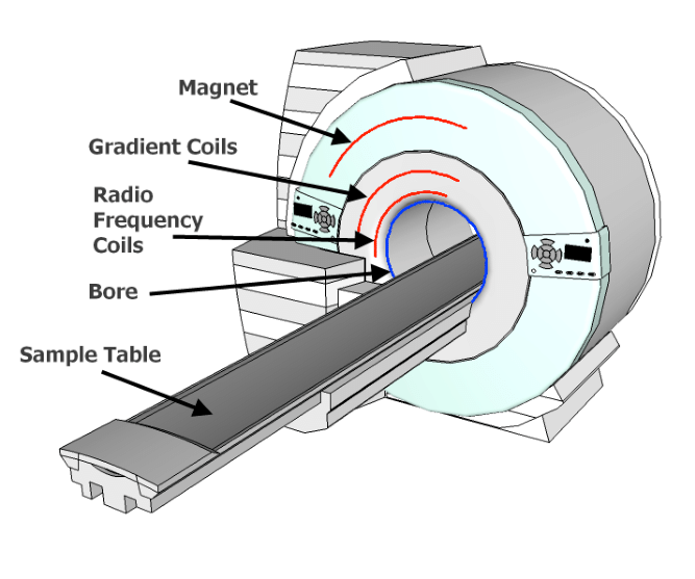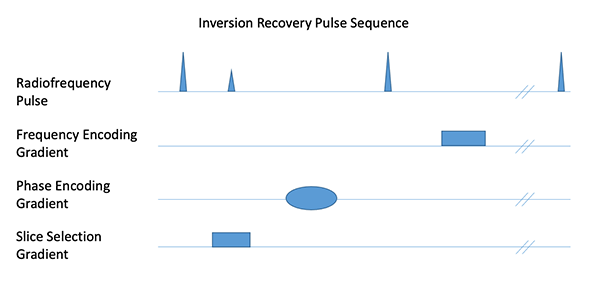How does an MRI machine work?

- An MRI machine is a coil within a coil within a coil…
- The largest coil is used to make the main magnetic field.
- Electric current is always running through large coil
- The current generates a very strong magnetic field directed through the bore of the MRI machine.
- Most clinical MRI machines produce either a 1.5 Tesla or 3 Tesla magnetic field. (Tesla is a measure of magnetic field strength)
- The other coils (radio frequency coil and gradient coils) are turned on and off as needed to manipulate the magnetic field while acquiring images.
How does an MRI machine make images?

- The body contains approximately 5 billion billion billion protons
- Protons, when placed in a magnetic field, start to spin in a special way (this is called precession)
- A radiofrequency pulse (basically radio wave) is emitted by a transmitter which rotates the protons into an orientation that makes them emit their own radiofrequency signal
- A receiver coil is used to collect the signal coming from the protons
- A computer is used to translate that signal into an image
What is a pulse sequence?

- A pulse sequence is a pre-programmed set of changing magnetic gradients used to produce a specific type of MRI image (T1-weighted image, T2-weighted image, Diffusion-weighted etc.)
- A pulse sequence is what we tell the MRI machine to do in order to make the type of image we want.
- Pulse sequences are often written in this form. Much like a music score, they are read left to right and the symbols describe which event happens in which order. You don't need to know how to interpret these.